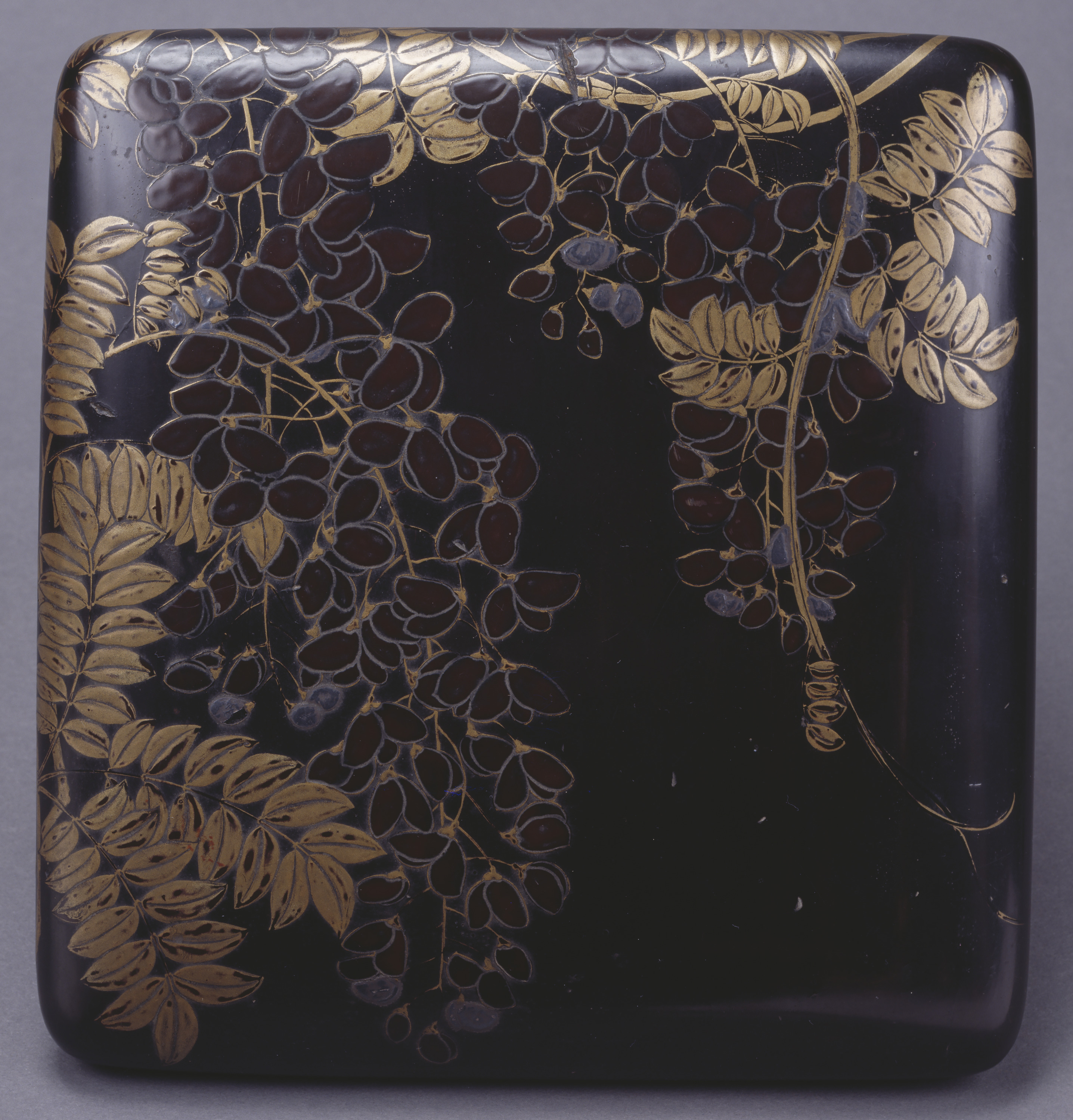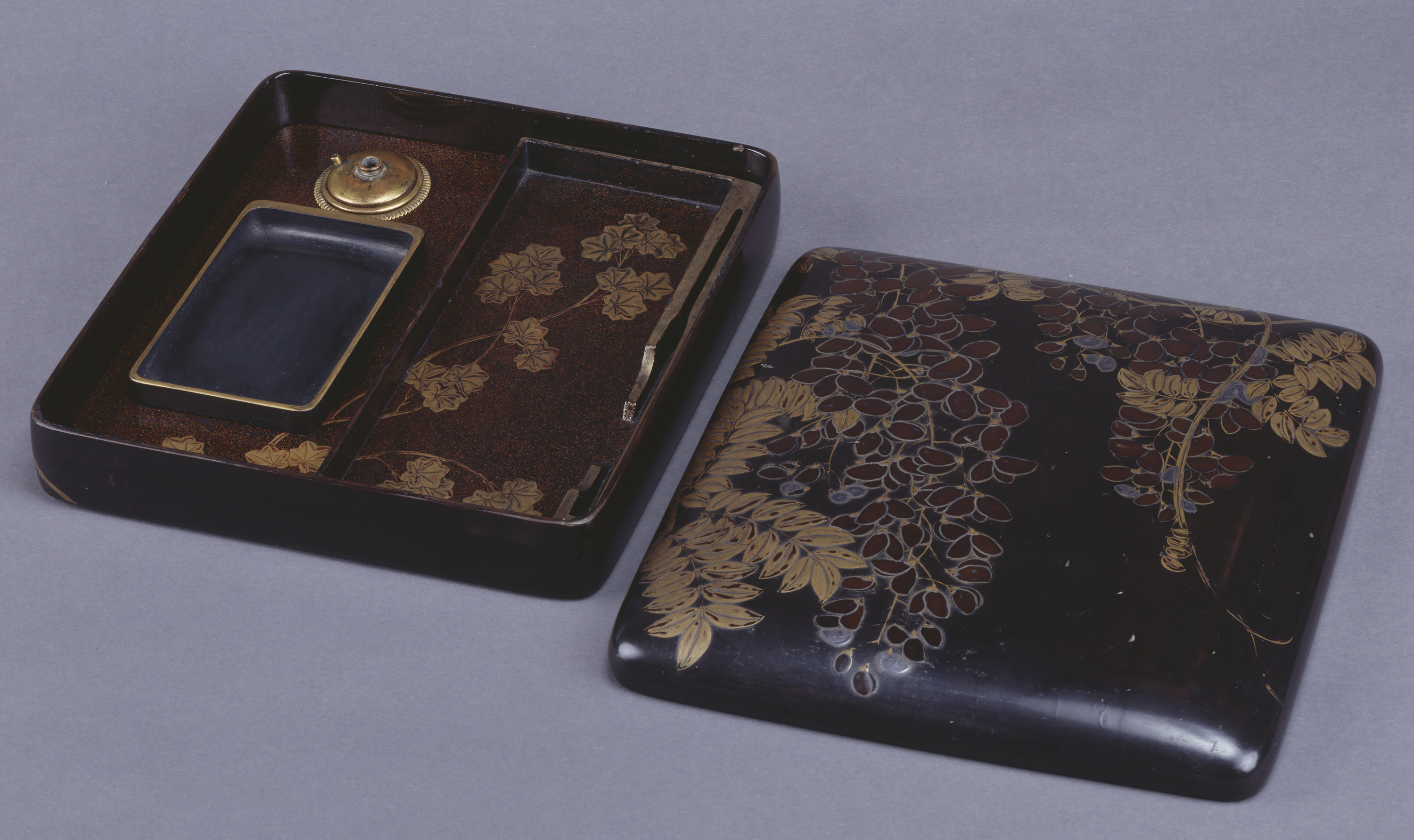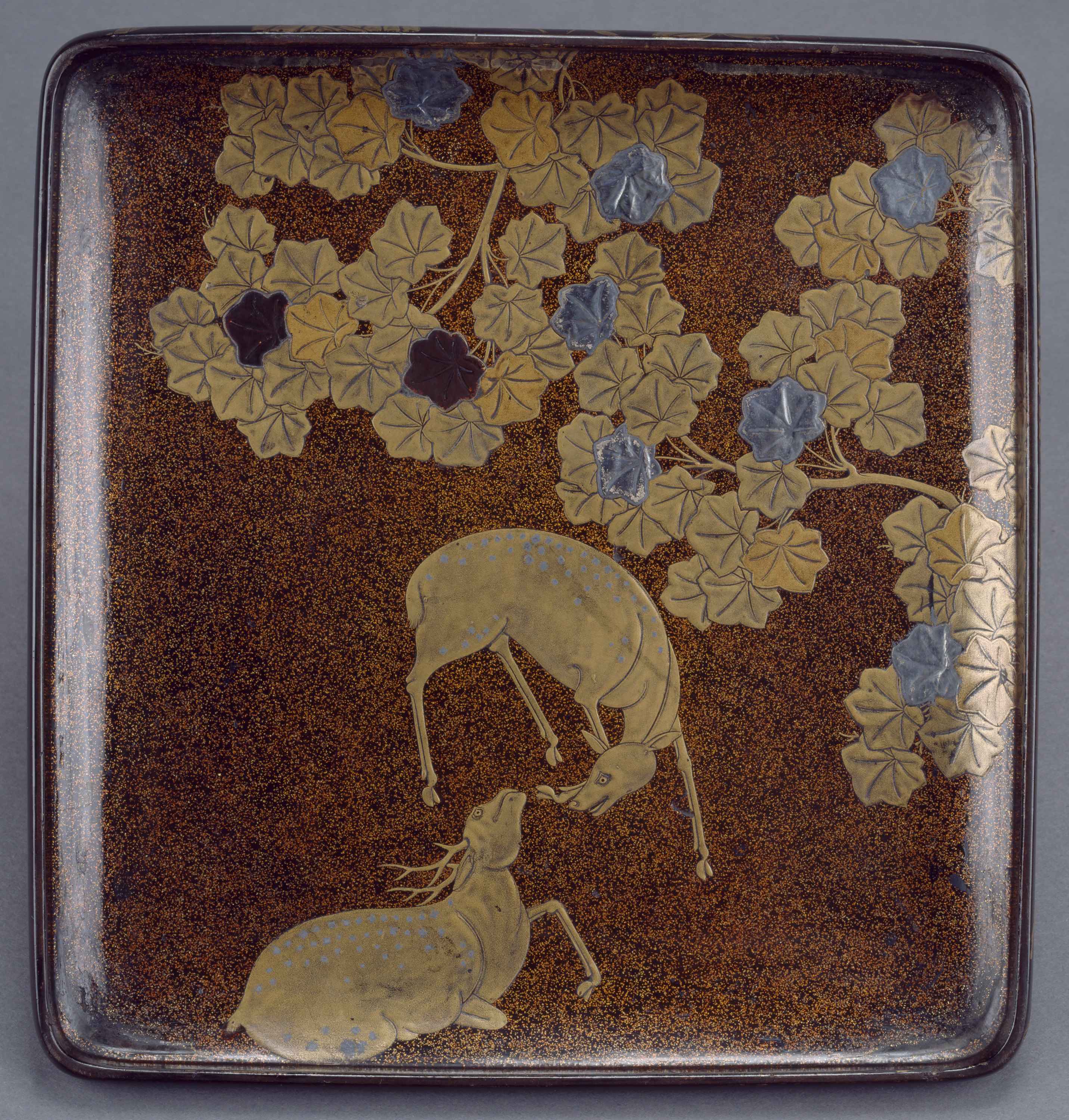- TOP
- Inkstone Case with Wisterias in Makie
Overview
Inkstone Case with Wisterias in Makie
- Museum No.
- HK109
Showing 1-6 of 4
| Title | Inkstone Case with Wisterias in Makie |
|---|---|
| Designation | |
| Artist | |
| Category | Lacquerware(H) |
| Country | Japan |
| Period | Edo |
| Century | |
| Year | |
| Quantity | |
| Materials | |
| Dimensions | Height 24.7cm Width 23.3cm Height 5.6cm |
| Inscription by | |
| Signature/Seals Etc | |
| Donor |
This object may be one within a set or the title of a set. To see all objects in the set, perform a Category Search by the Museum Number below, entering numerals only before the hyphen.













The curved form created by this work's lid and case, and the design in which certain parts of flowering plants are shown enlarged, are typical of Rinpa School styles that became popular after the mid-Edo period (1615-1868). Because the silver kanagai ("metal nacre"), which had been applied in drawing wisterias, had come off, the reddish brown lacquered surface is exposed. Inside the case are a gesuiban ("wastewater plate") with a gilt bronze pitcher, an inkstone, and a kakego ("hanging box") with indentations for resting a paper knife. Both the gesuiban and the kakego are decorated with maples in gold leaf takamakie ("raised makie"), the gesuiban, however, was applied in later years. A design of maples and a pair of deer in silver kanagai are also on the back of the lid.
Japan-Edo